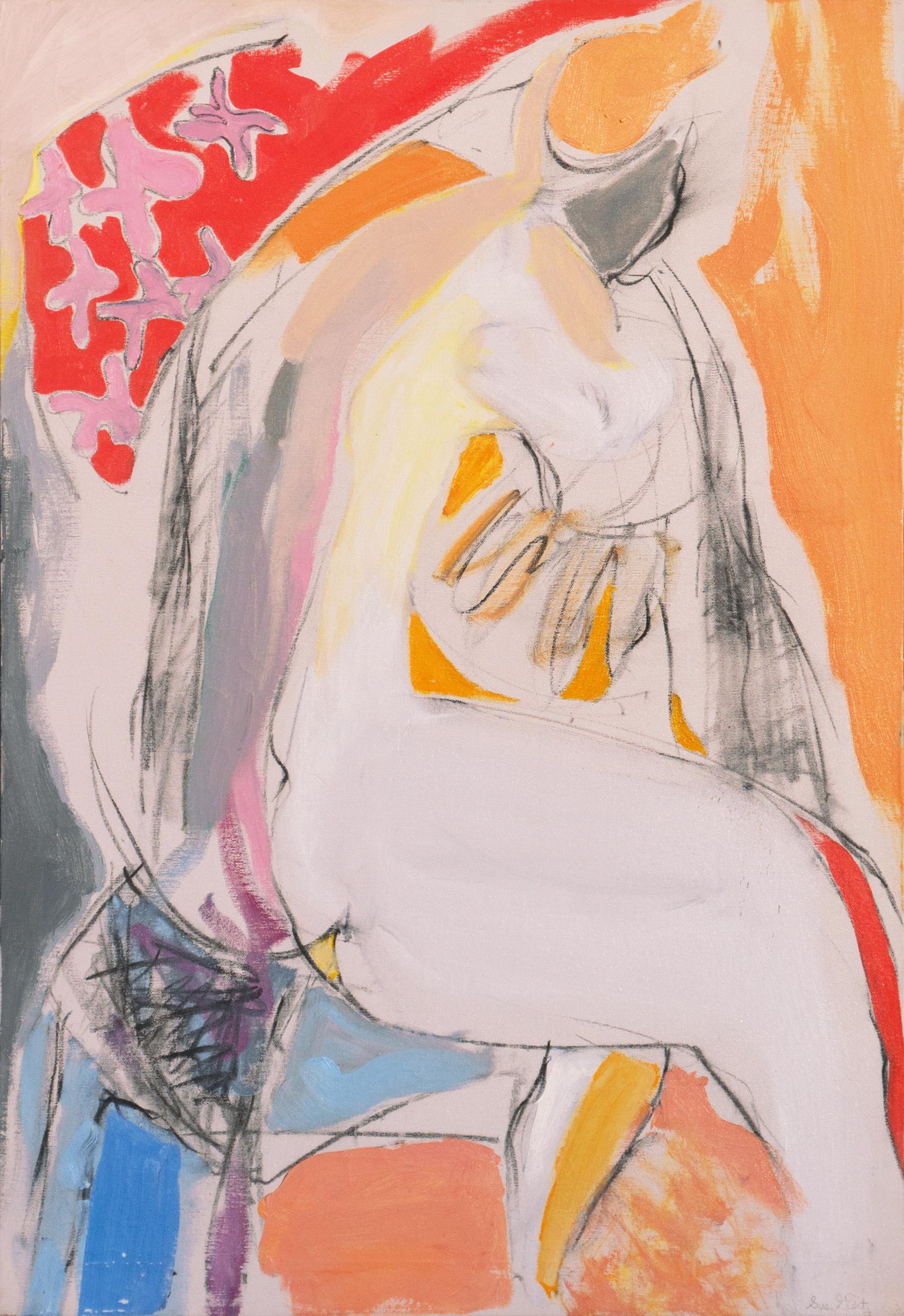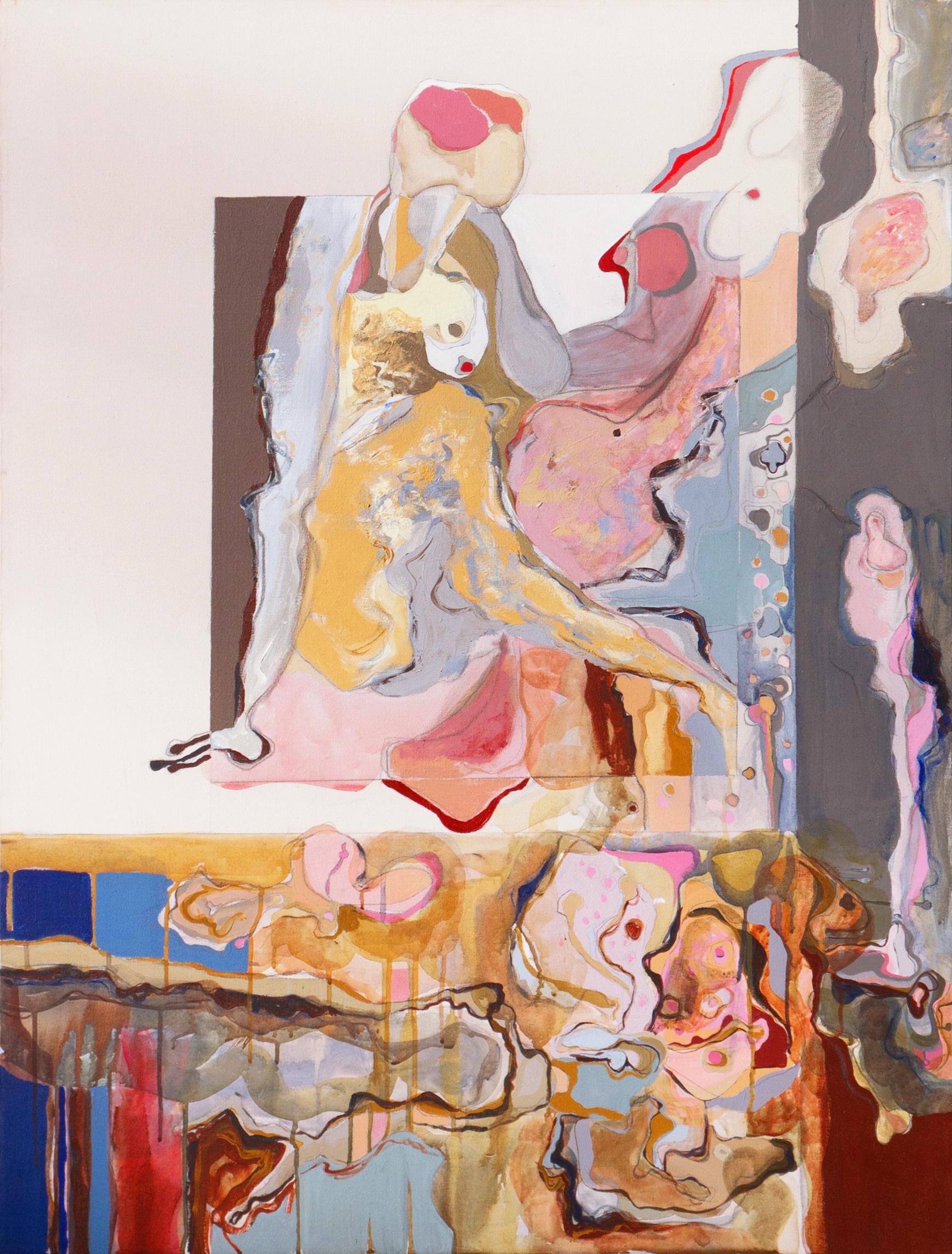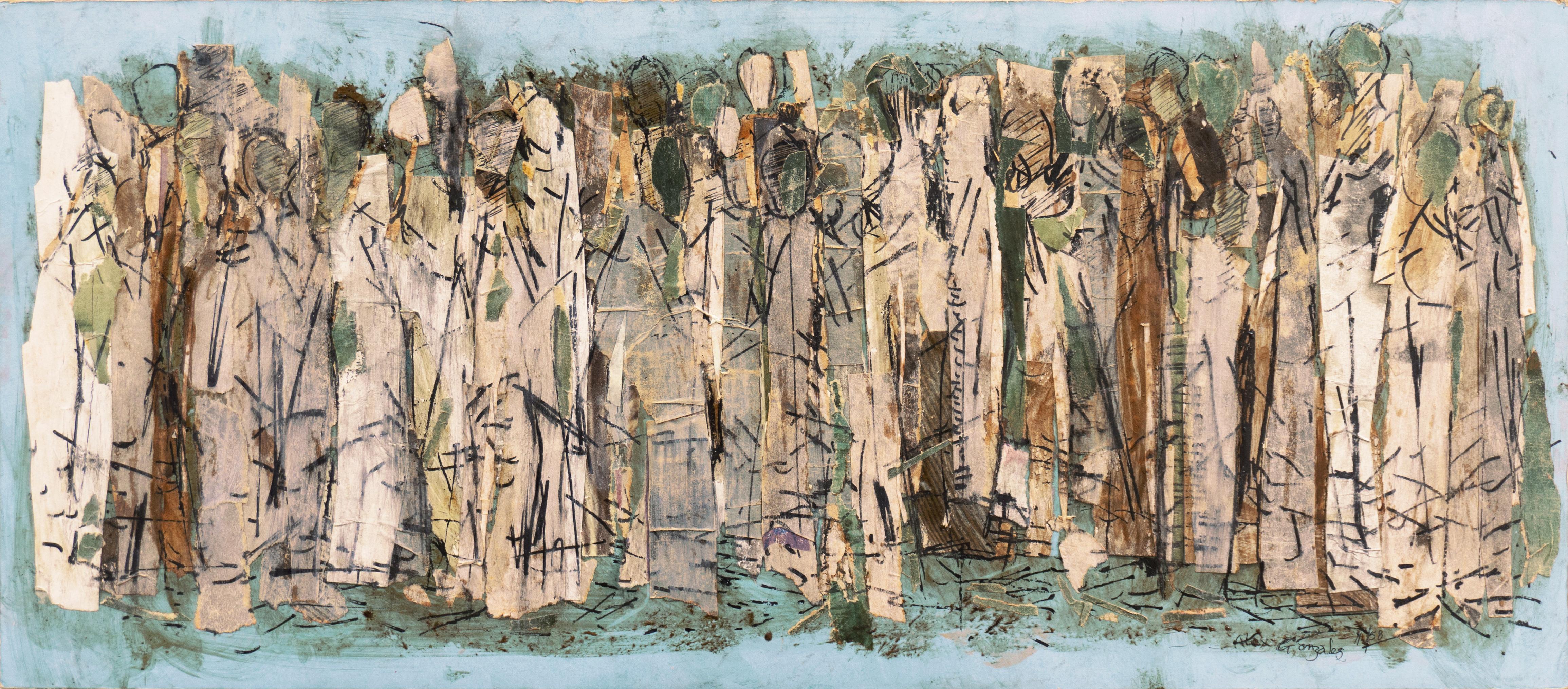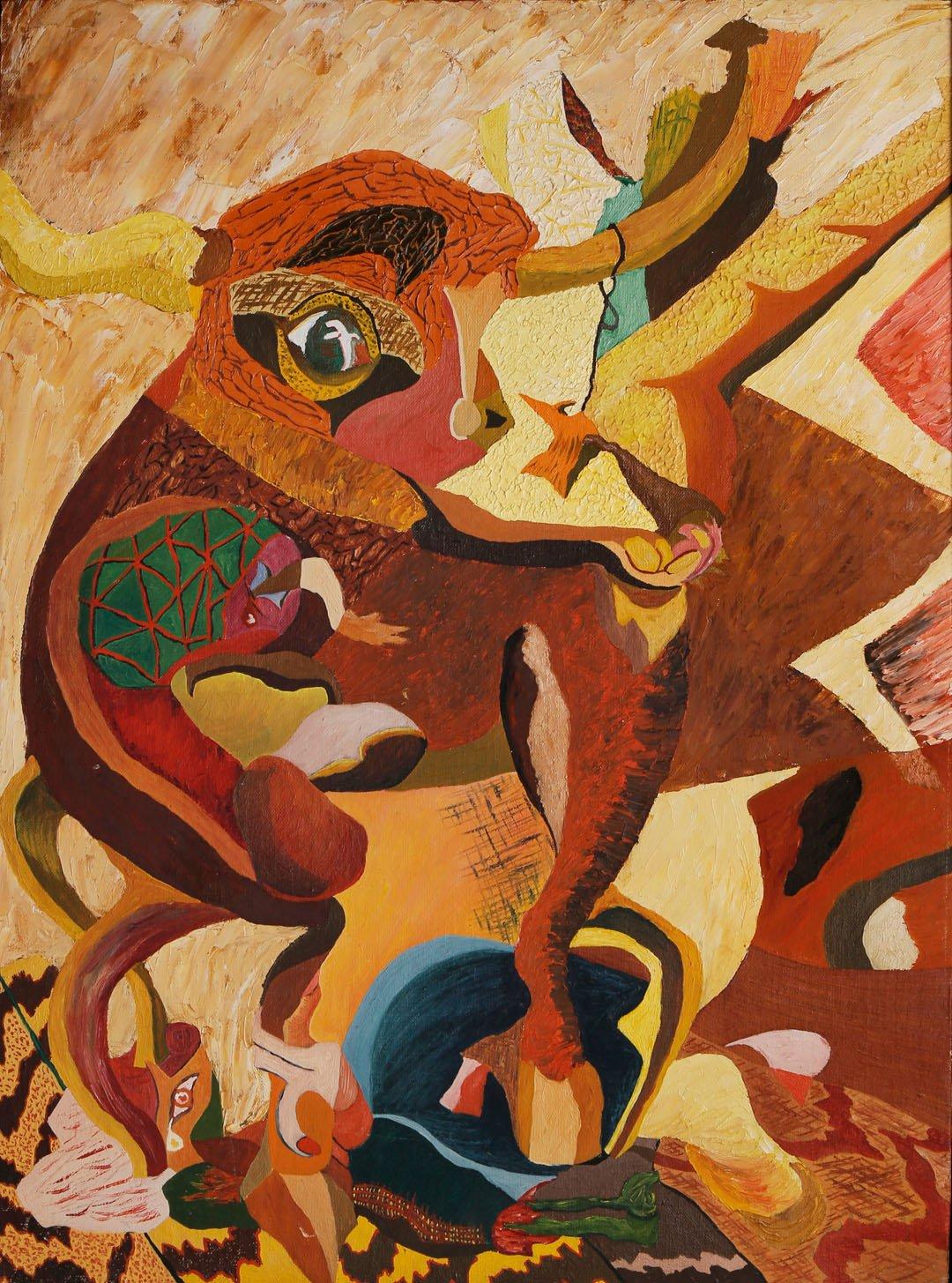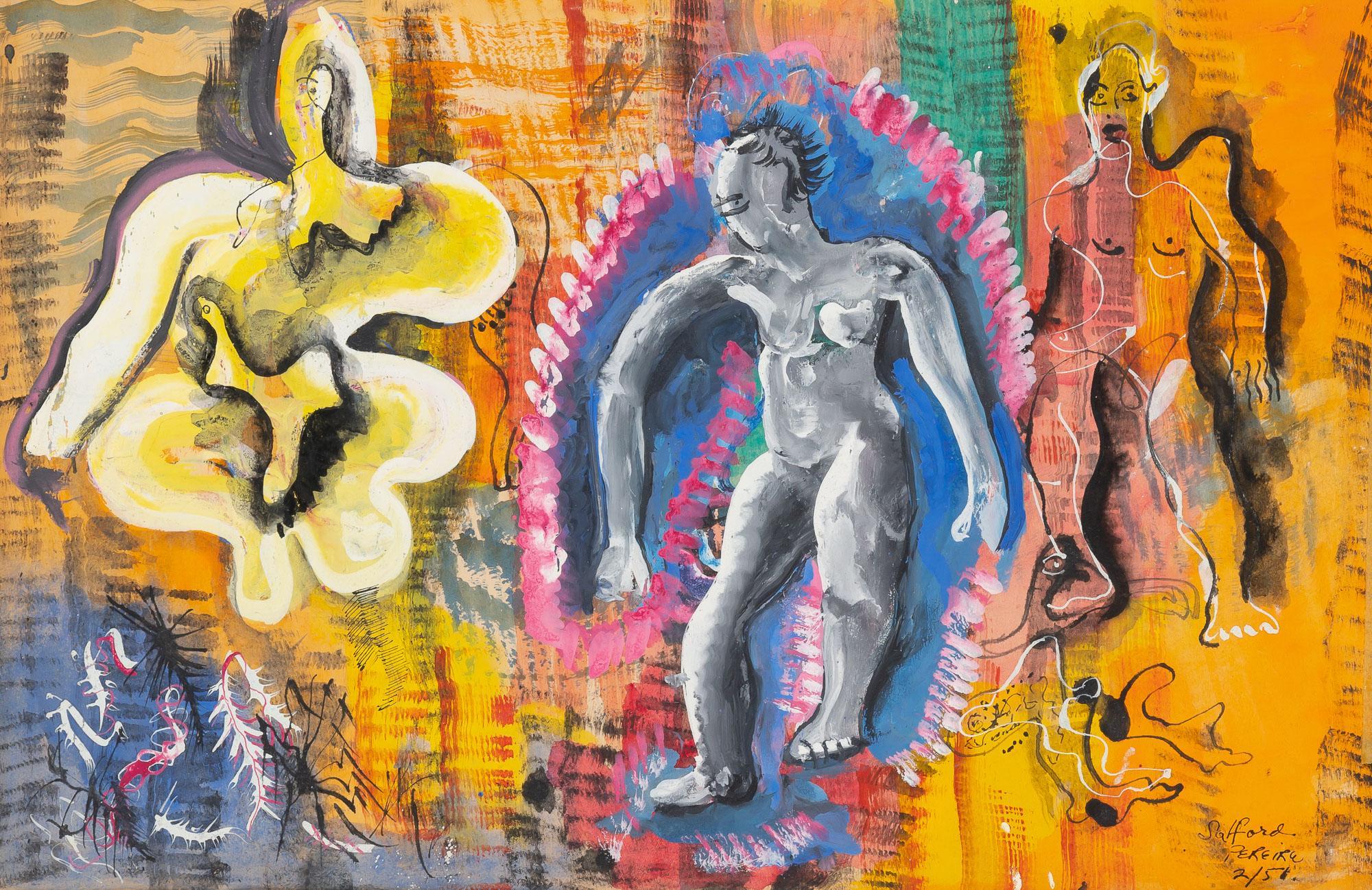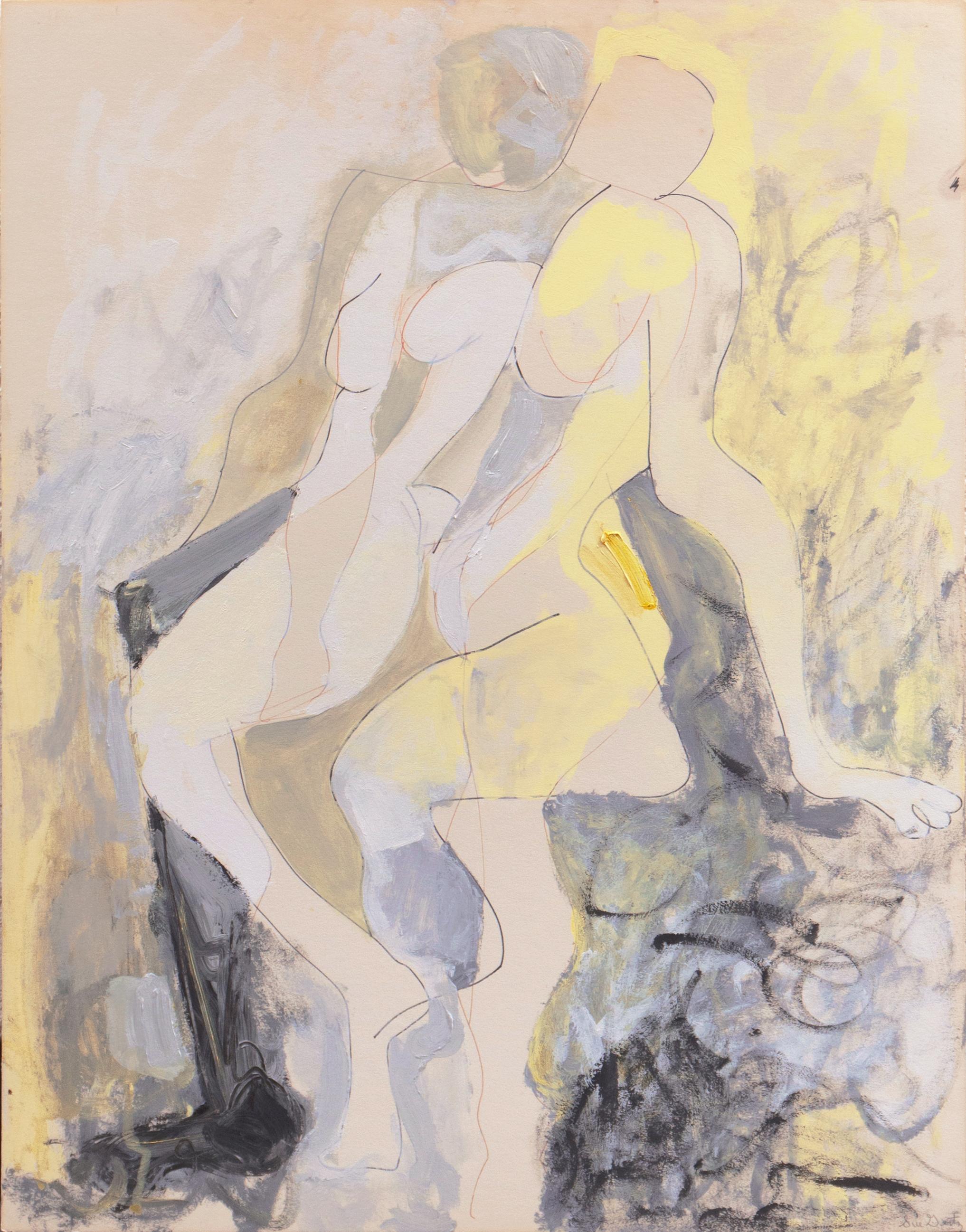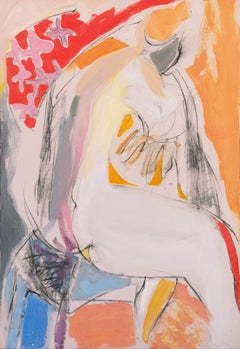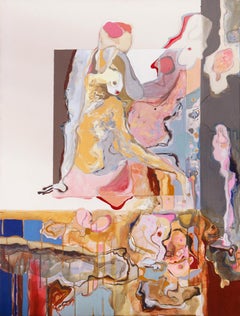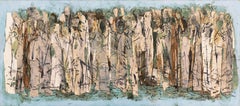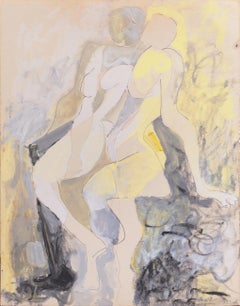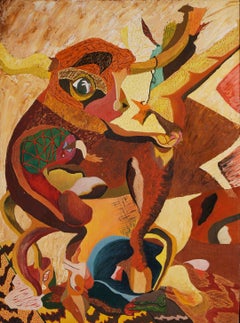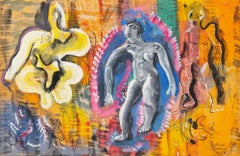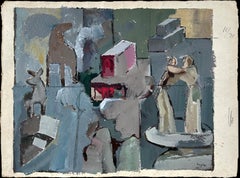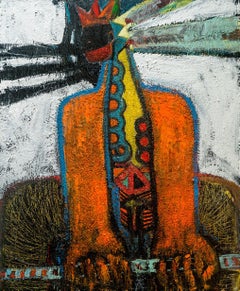Items Similar to 'Modernist Figural', California, New Mexico, Oakland Museum, SFAA, SFMA, GGIE
Want more images or videos?
Request additional images or videos from the seller
1 of 10
Zena Kavin'Modernist Figural', California, New Mexico, Oakland Museum, SFAA, SFMA, GGIE1966
1966
$3,600
£2,733.06
€3,126.04
CA$5,029.72
A$5,594.15
CHF 2,921.09
MX$68,074.84
NOK 37,306.79
SEK 34,987.18
DKK 23,330.80
Shipping
Retrieving quote...The 1stDibs Promise:
Authenticity Guarantee,
Money-Back Guarantee,
24-Hour Cancellation
About the Item
Signed lower right, 'Z. Kavin' for Zena Kavin (American, 1912-2003) and dated 1966.
Born in Berkeley, California, Zena Kavin studied at the California School of Fine Arts in San Francisco and, privately, with Kravchenko in Moscow. She lived in Berkeley and in Oakland her entire life, except for four years spent in New Mexico in the late 1930s. In 1949, she married artist Jon Cornin and settled with him in Oakland. Under the peudonym Corka, the Cornins produced cartoons for the Saturday Evening Post and the New Yorker. Kavin worked in various media, including wood engraving, lithography and sculpture. She was a member of the San Francisco Artists Association and exhibited with them as well as at the San Francisco Museum of Art Inaugural (1935), the California–Pacific International Exposition, San Diego (1935), the Golden Gate International Exposition (1939). Her work is held in the permanent collections of the Davis Art Center, the New Mexico Museum of Art and the Oakland Museum of California.
Reference:
Artists in California 1786-1940, Third Edition, Edan Milton Hughes: Crocker Art Museum, Sheridan Books 2002, Vol. 1, page 610; Who Was Who in American Art 1564-1975: 400 Years of Artists in America, Peter Hastings Falk, Sound View Press 1999, Vol. 2, page 1801; Mallett’s Index of Artists, Supplement, Daniel Trowbridge Mallett, Peter Smith: New York 1948 Edition, R.R. Bowker Company 1940, page 146; Davenport’s Art Reference 2009/10 Edition, LTB Gordonsart, Inc. 2008, page 1444; et al.
- Creator:Zena Kavin (1912 - 2003)
- Creation Year:1966
- Dimensions:Height: 32.25 in (81.92 cm)Width: 18.25 in (46.36 cm)Depth: 0.13 in (3.31 mm)
- Medium:
- Movement & Style:
- Period:
- Condition:minor restoration, minor losses, minor corner bumping; unframed; shows well.
- Gallery Location:Santa Cruz, CA
- Reference Number:1stDibs: LU34411203972
About the Seller
5.0
Platinum Seller
Premium sellers with a 4.7+ rating and 24-hour response times
Established in 1982
1stDibs seller since 2013
741 sales on 1stDibs
Typical response time: 1 hour
- ShippingRetrieving quote...Shipping from: Santa Cruz, CA
- Return Policy
Authenticity Guarantee
In the unlikely event there’s an issue with an item’s authenticity, contact us within 1 year for a full refund. DetailsMoney-Back Guarantee
If your item is not as described, is damaged in transit, or does not arrive, contact us within 7 days for a full refund. Details24-Hour Cancellation
You have a 24-hour grace period in which to reconsider your purchase, with no questions asked.Vetted Professional Sellers
Our world-class sellers must adhere to strict standards for service and quality, maintaining the integrity of our listings.Price-Match Guarantee
If you find that a seller listed the same item for a lower price elsewhere, we’ll match it.Trusted Global Delivery
Our best-in-class carrier network provides specialized shipping options worldwide, including custom delivery.More From This Seller
View All'Abstract Figural', Woman Artist, Art Institute of Chicago, San Bernardino
Located in Santa Cruz, CA
Signed lower right, in graphite, 'Sue Gertz' for Suzanne Gertz (American, 1938-2003) and painted circa 1975.
Suzanne Gertz first studied at the Art Institute of Chicago and, subsequ...
Category
1970s Modern Nude Paintings
Materials
Oil, Canvas, Charcoal
'Figurative Abstract', Woman Artist, Art Institute of Chicago, San Bernardino
Located in Santa Cruz, CA
Stamped, verso, with certification of authenticity for Suzanne Gertz (American, 1938-2003) and painted circa 1985, partial signature lower right.
Suzanne Gertz first studied at the...
Category
1980s Modern Nude Paintings
Materials
Canvas, Acrylic, Graphite
'Abstracted Figural', Carmel Art Association, San Francisco Art Institute
Located in Santa Cruz, CA
Signed lower right, 'Alex Gonzales' (American, 1927-2020) and dated, '11/58'.
A delicate and enigmatic, mid-century, painted collage showing a processio...
Category
1950s Abstract Expressionist Mixed Media
Materials
Resin, Paper, India Ink, Magazine Paper, Illustration Board
'Abstract Figural', Woman Artist, Art Institute of Chicago, San Bernardino
Located in Santa Cruz, CA
Signed lower right, 'Sue Gertz' for Suzanne Gertz (American, 1938-2003) and painted circa 1985.
Suzanne Gertz first studied at the Art Institute of Chicago and, subsequently, at Bar...
Category
1970s Abstract Nude Paintings
Materials
Oil, Illustration Board, Felt Pen
'Abstracted Figure', Sydney, Museum of Modern Art in Sao Paulo, Brazil
Located in Santa Cruz, CA
Signed lower right, 'Bonorat' and painted circa 1980
An elegant, modernist figural painting and early work by this Sydney-based Mexican artist who studied at the National School of Fine Arts in Mexico City (1982-84) and, subsequently, at the Museum of Modern Art in Sao Paulo, Brazil (1986).
STUDIES
1982-1984 Painting and Drawing Ateliers – National School of Fine Arts, Mexico City
1985-1986 Artistic Experimentation – Carrillo Hill Museum, Mexico City
1986 Metal Engraving – Museum of Modern Art Sao Paulo Brazil
SOLO EXHIBITIONS
1986 Art Gallery of Santos Municipal Cultural Centre, Sao Paulo, Brazil
1988 Art Gallery of Porto Alegre Municipal centre, R.S. Brazil
1991 Gallery Casa de la Cultura, Morelia Mexico
1994 The Beatty Gallery, Sydney
1996 The Beatty Gallery, Sydney
1996 Michael Burke Gallery, Brisbane
1997 The Beatty Gallery, Sydney
2019 ‘Golden Trinity’, Thienny Lee Gallery, Sydney
2019 ‘Continuous Thread, GAFFA Gallery, Sydney
GROUP EXHIBITIONS
1985 Mail Art Network Kyoto City Museum, Kyoto Japan
1987 Banespa Cultural Centre, Sao Paulo Brazil
1988 IV National Contest of Fine Arts, Cubatao Brazil
1992 NCA Gallery, Sydney
1994 The Beatty Gallery, Sydney
1994/5/6 Selected for the “Fisher’s Ghost” Art...
Category
1980s Modern Figurative Drawings and Watercolors
Materials
Paper, Ink, Watercolor, Gouache
'Man In Motion', Framed Modernist Figural, Woman Artist, SFMOMA, Oakland Museum
By Carrie Lederer
Located in Santa Cruz, CA
Signed lower right and painted circa 1985.
Provenance label verso from Ianetti Lanzone Gallery.
Winner of the prestigious Fleishacker Eureka Fellowship, Carrie Lederer received her BFA in sculpture from Michigan State University and has exhibited both nationally and internationally with success including at the San Francisco Museum of Modern Art, the Oakland Museum, the Calvin Morris...
Category
1980s Modern Figurative Paintings
Materials
Canvas, Oil
You May Also Like
20th C. Figurative Abstract Painting Cleveland School African American Artist
By Beni E. Kosh
Located in Beachwood, OH
Beni E. Kosh/Charles Elmer Harris (American, 1917-1993)
Untitled
Oil on canvas board
Estate stamped #611 verso
24 x 18 inches
Charles Elmer Harris was born in 1917 in Cleveland, Oh...
Category
20th Century American Modern Figurative Paintings
Materials
Oil
"Composition with Figure, " Irene Rice Pereira
By Irene Rice Pereira
Located in New York, NY
Irene Rice Pereira
Composition with Figure, 1951
Inscribed, signed and dated Salford/Pereira 2/51 (lr); inscribed I Rice Pereira/2669 Great Clowes St/Sa...
Category
1950s Abstract Abstract Paintings
Materials
Paper, India Ink, Casein
Abstract Figural and Pediments - Two Sided Art - James Coughlin
By James Coughlin
Located in Soquel, CA
Abstract Figural and Pediments - Two Sided Art
Mid century figural and architectural painting on paper. Heavy layers of paint with a dog on an abutment and two Japanese wrestlers...
Category
1960s Abstract Expressionist Figurative Paintings
Materials
Acrylic, Handmade Paper
ORÍ GUERREIRA TAMOYA, Painting. From the Series Figures
Located in Miami Beach, FL
For Jose Ignacio Suarez an abyss of time and space distances him from those who were the first inhabitants of the Brazilian coasts and of this vast American continent. His initial la...
Category
2010s Abstract Abstract Paintings
Materials
Canvas, Acrylic
Untitled, Figure Study
By Hans Burkhardt
Located in Palm Desert, CA
"Untitled, Figure Study" is an abstract figurative Post War pastel on paper paintings by Hans Burkhardt in 1967. The artwork is 21 1/4 x 16 1/4 inches and, with the frame, is 28 3/4...
Category
20th Century Post-War Abstract Paintings
Materials
Paper, Pastel
Figure Abstract
By Marc Zimmerman
Located in Carmel, CA
This painting is currently on display at the Zimmerman Gallery in Carmel, CA
Abstract with a figurative bias; the best of opposing worlds unified with pastel color delight, soft yet ...
Category
2010s Contemporary Figurative Paintings
Materials
Oil
